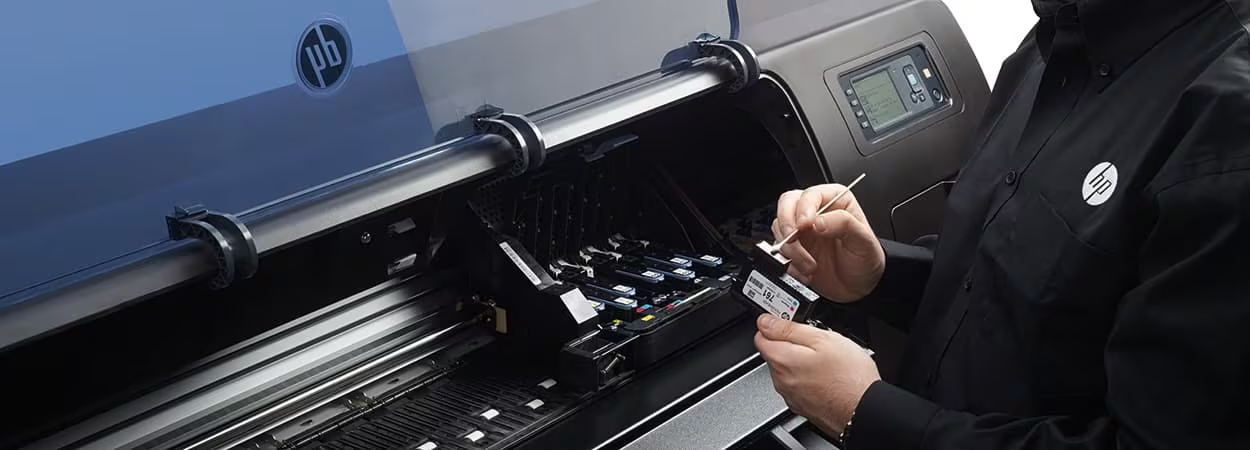The best material for cleaning an inkjet printhead is typically a combination of distilled water and isopropyl alcohol, specifically around a 50/50 mix.
This solution is effective at dissolving dried ink without damaging the delicate printhead components. However, before diving into cleaning, let’s understand printheads and clogs a bit better.
What is a Printhead?
The printhead is the heart of your inkjet printer. It’s a tiny device containing hundreds of nozzles that spray ink onto the paper to create an image. These nozzles are microscopic and can easily become clogged with dried ink.
Why Do Printheads Get Clogged?
There are several reasons why printheads get clogged. One common culprit is infrequent use. If your printer sits idle for extended periods, the ink in the nozzles can dry and harden. Additionally, using low-quality ink or leaving ink cartridges open can also contribute to clogs.
What are Some Common Cleaning Solutions?
Many people recommend various household products for cleaning printheads, such as acetone, ammonia, or even water alone. However, these can be risky. Acetone and ammonia are too harsh and can damage the delicate printhead components. Water, while not necessarily harmful, isn’t strong enough to dissolve stubborn clogs.
Is There a Customized Option for Printhead Cleaning?
Most printer manufacturers offer their cleaning solutions specifically designed for their printers. These can be a good option, but they can also be more expensive than using a homemade solution.
How to Clean a Printhead?
Before attempting any cleaning, always consult your printer’s manual for specific instructions. However, the general steps involve using the printer’s built-in cleaning utility (most models have one) followed by a physical cleaning if necessary. The manufacturer’s guide will detail these processes.
Manual cleaning should only be attempted as a last resort and with extreme caution. It typically involves removing the printhead and gently wiping the nozzles with a lint-free cloth dampened with the cleaning solution. Again, refer to your manual for specific steps to avoid damaging the printhead.
Can I Use Acetone, Isopropyl Alcohol, or Methylated Spirits?
While these solvents are effective at cleaning, they’re too strong for inkjet printheads. They can damage fragile components and even dissolve the plastic housing.
Finding the Right Cleaning Solution for Your Printer Model
Always check your printer’s manual for recommended cleaning solutions. If the manual doesn’t specify, a 50/50 mix of distilled water and isopropyl alcohol (around 70% concentration) is generally safe for most models.
The Benefits of Using Distilled Water for Cleaning Inkjet Printers
Distilled water is free of minerals and impurities that can leave residue and contribute to future clogs. It also helps dilute the isopropyl alcohol to a safer concentration for the printhead.
Tips for Printhead Maintenance and Prevention
Most printers will alert you when it’s time to clean the printhead. You may also notice signs like streaky or faded prints, missing colors, or lines on your printed documents.
Contacting a Professional for Help
If cleaning with a proper solution doesn’t resolve the issue, it’s best to consult a professional technician. They have the expertise and tools to diagnose the problem and potentially repair or replace the printhead.
Using Preventative Measures to Avoid Clogs
The best way to deal with clogged printheads is to prevent them in the first place. Here are some tips:
- Print regularly: Use your printer at least once a week to keep the ink flowing.
- Turn off the printer properly: Most printers automatically cap the printhead when turned off, preventing ink from drying.
- Use high-quality ink: Invest in good-quality ink cartridges designed for your printer model.
- Store ink cartridges properly: Keep unopened ink cartridges in a cool, dark place.
Conclusion
By understanding what clogs printheads and using the right cleaning materials, you can keep your printer functioning smoothly and avoid costly repairs. Remember, prevention is key! Regularly using your printer and maintaining it properly will go a long way in ensuring your prints stay sharp and vibrant.

